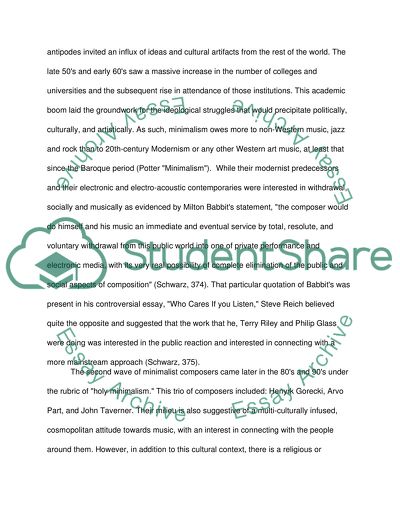Cite this document
(“Minimalism and Music Essay Example | Topics and Well Written Essays - 2250 words”, n.d.)
Retrieved de https://studentshare.org/music/1523338-minimalism-and-music
Retrieved de https://studentshare.org/music/1523338-minimalism-and-music
(Minimalism and Music Essay Example | Topics and Well Written Essays - 2250 Words)
https://studentshare.org/music/1523338-minimalism-and-music.
https://studentshare.org/music/1523338-minimalism-and-music.
“Minimalism and Music Essay Example | Topics and Well Written Essays - 2250 Words”, n.d. https://studentshare.org/music/1523338-minimalism-and-music.


